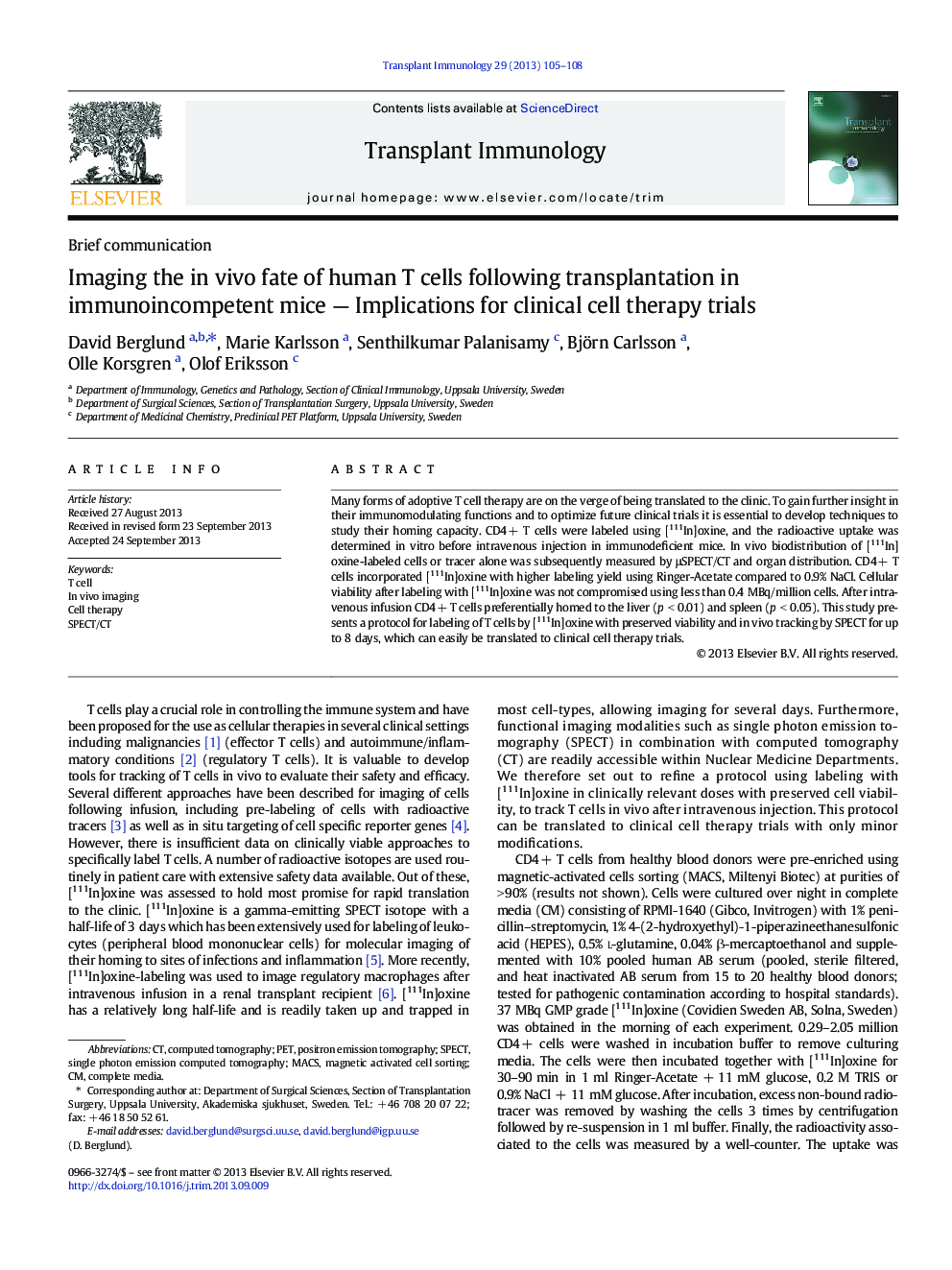| Article ID | Journal | Published Year | Pages | File Type |
|---|---|---|---|---|
| 6126043 | Transplant Immunology | 2013 | 4 Pages |
Abstract
Many forms of adoptive T cell therapy are on the verge of being translated to the clinic. To gain further insight in their immunomodulating functions and to optimize future clinical trials it is essential to develop techniques to study their homing capacity. CD4 + T cells were labeled using [111In]oxine, and the radioactive uptake was determined in vitro before intravenous injection in immunodeficient mice. In vivo biodistribution of [111In]oxine-labeled cells or tracer alone was subsequently measured by μSPECT/CT and organ distribution. CD4 + T cells incorporated [111In]oxine with higher labeling yield using Ringer-Acetate compared to 0.9% NaCl. Cellular viability after labeling with [111In]oxine was not compromised using less than 0.4 MBq/million cells. After intravenous infusion CD4 + T cells preferentially homed to the liver (p < 0.01) and spleen (p < 0.05). This study presents a protocol for labeling of T cells by [111In]oxine with preserved viability and in vivo tracking by SPECT for up to 8 days, which can easily be translated to clinical cell therapy trials.
Keywords
Related Topics
Life Sciences
Immunology and Microbiology
Immunology
Authors
David Berglund, Marie Karlsson, Senthilkumar Palanisamy, Björn Carlsson, Olle Korsgren, Olof Eriksson,
